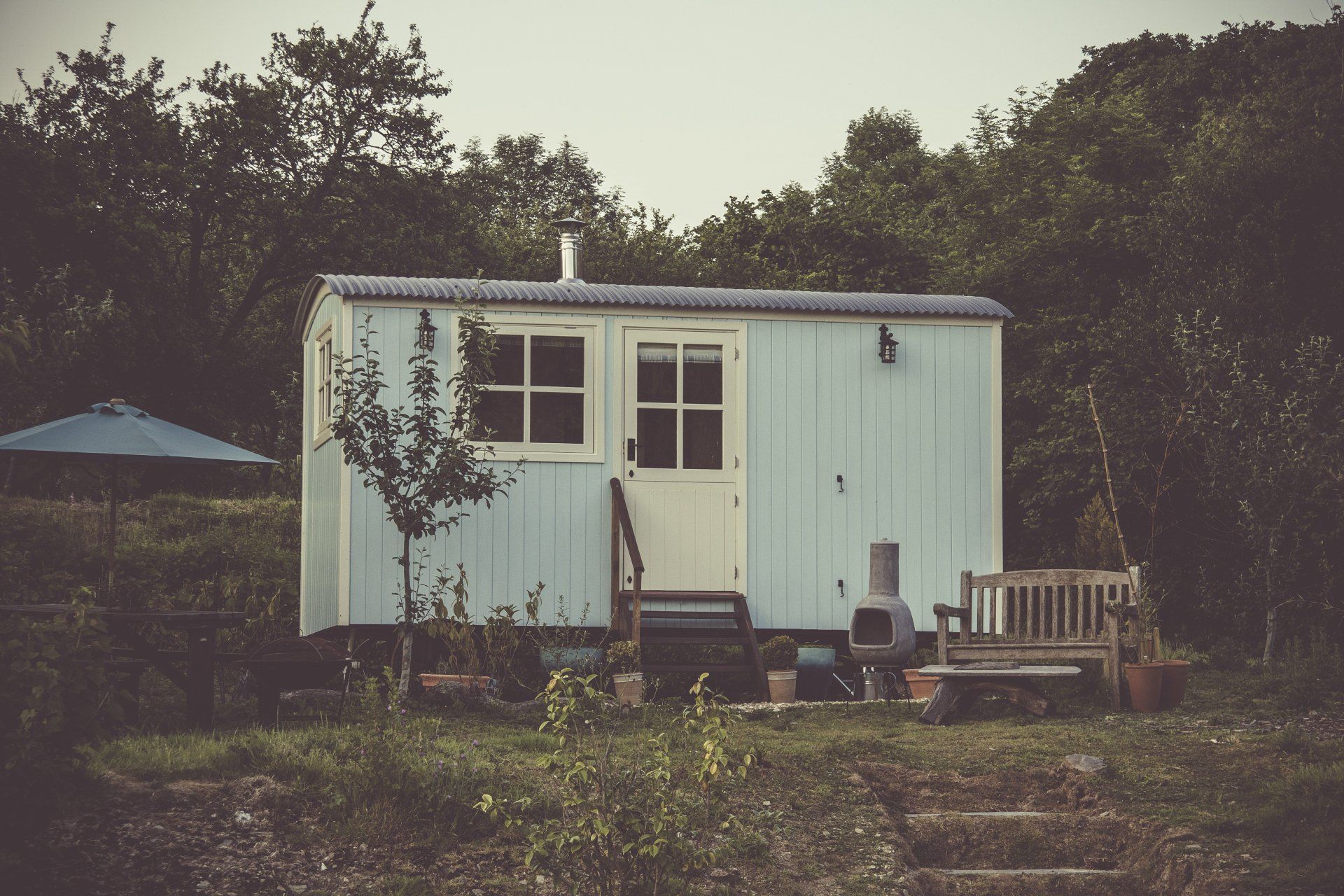Green Living
Green Living: Sustainable Practices for an Eco-Friendly Home
In a world increasingly conscious of environmental issues, adopting sustainable practices at home is a powerful way to contribute to a healthier planet. Green living goes beyond recycling; it involves making mindful choices that reduce your ecological footprint and promote a more sustainable lifestyle. In this blog post, we'll explore a variety of sustainable practices you can implement to transform your home into an eco-friendly haven.
Sustainable Energy Solutions
1. Solar Power Integration
Harnessing the power of the sun through solar panels is a major step toward a sustainable home. Solar energy is a clean and renewable source that can help reduce your dependence on conventional power sources.
Additional Tips:
- Explore government incentives and rebates for installing solar panels.
- Consider a solar water heater to further reduce energy consumption.
2. Energy-Efficient Appliances
Upgrade to energy-efficient appliances that carry the ENERGY STAR label. These appliances are designed to consume less energy, saving you money on utility bills while minimizing environmental impact.
Additional Tips:
- Opt for LED or CFL bulbs for lighting, as they use less energy and have a longer lifespan.
- Unplug electronic devices and chargers when not in use to prevent standby power consumption.
Water Conservation
3. Low-Flow Fixtures
Replace traditional faucets and showerheads with low-flow alternatives. These fixtures reduce water consumption without sacrificing performance, helping you save both water and energy.
Additional Tips:
- Fix leaks promptly to prevent water wastage.
- Consider installing a dual-flush toilet to control water usage based on the type of waste.
4. Rainwater Harvesting
Collect rainwater for irrigation purposes by installing a rain barrel or a more sophisticated rainwater harvesting system. This practice not only conserves water but also provides a natural and nutrient-rich source for your plants.
Additional Tips:
- Use rainwater for washing outdoor surfaces or even flushing toilets.
- Position gutters and downspouts to direct rainwater efficiently into collection systems.
Sustainable Materials and Design
5. Bamboo Flooring
Opt for sustainable flooring materials like bamboo. Bamboo is a rapidly renewable resource that grows much faster than traditional hardwoods, making it an eco-friendly choice for flooring.
Additional Tips:
- Choose reclaimed wood for furniture and decor items.
- Look for certifications such as Forest Stewardship Council (FSC) when purchasing wood products to ensure responsible sourcing.
6. Eco-Friendly Insulation
Invest in insulation materials with a low environmental impact, such as recycled denim, wool, or cellulose insulation. These alternatives provide effective insulation while reducing the use of harmful chemicals.
Additional Tips:
- Seal gaps and cracks in windows and doors to improve energy efficiency.
- Explore options for natural insulation materials like cork or hemp.
Waste Reduction and Recycling
7. Composting System
Start a composting system to reduce the amount of organic waste sent to landfills. Composting not only helps create nutrient-rich soil for your garden but also minimizes greenhouse gas emissions associated with organic waste decomposition.
Additional Tips:
- Include kitchen scraps, yard waste, and non-diseased plant materials in your compost.
- Turn the compost regularly to accelerate the decomposition process.
8. Zero-Waste Lifestyle
Embrace a zero-waste lifestyle by reducing single-use plastics and packaging. Opt for reusable containers, bags, and utensils to minimize waste generation.
Additional Tips:
- Choose products with minimal or compostable packaging.
- Participate in community recycling programs and drop-off locations for items like electronics and batteries.
Sustainable Landscaping
9. Native Planting
Design a garden with native plants that are adapted to your region's climate and require less water and maintenance. Native plants also support local ecosystems by providing habitat for wildlife.
Additional Tips:
- Use organic mulch to retain soil moisture and suppress weeds.
- Incorporate rain gardens to manage stormwater runoff naturally.
10. Permeable Surfaces
Opt for permeable paving materials like permeable concrete, gravel, or permeable pavers for driveways and walkways. These surfaces allow rainwater to penetrate the ground, reducing runoff and promoting groundwater recharge.
Additional Tips:
- Position permeable surfaces strategically to capture and direct rainwater to plant beds.
- Combine permeable surfaces with rain gardens for an integrated stormwater management approach.
Eco-Friendly Practices in the Kitchen
11. Green Kitchen Appliances
Choose energy-efficient and water-saving kitchen appliances, including refrigerators, dishwashers, and stoves. Look for eco-friendly certifications and features that contribute to a more sustainable kitchen.
Additional Tips:
- Opt for glass or stainless steel containers instead of plastic for food storage.
- Compost kitchen scraps to minimize organic waste.
12. Local and Organic Food Choices
Support local farmers and reduce your carbon footprint by choosing locally produced and organic foods. These choices not only promote sustainable agriculture but also contribute to healthier and more nutrient-rich meals.
Additional Tips:
- Explore farmers' markets and community-supported agriculture (CSA) programs.
- Grow your own herbs, fruits, or vegetables in a small home garden.
Creating an Eco-Friendly Home Office
13. Energy-Efficient Electronics
Select energy-efficient computers, printers, and other office electronics. Look for devices with power-saving features and certifications indicating low energy consumption.
Additional Tips:
- Enable power-saving settings on computers and other electronic devices.
- Unplug chargers and electronic devices when not in use to prevent standby power consumption.
14. Natural Lighting and Ventilation
Maximize natural lighting and ventilation in your home office to reduce reliance on artificial lighting and air conditioning. Use energy-efficient windows and curtains to control light and temperature.
Additional Tips:
- Position your workspace near windows to benefit from natural daylight.
- Install ceiling fans for efficient air circulation without the need for constant air conditioning.
Renewable Energy Sources
15. Wind Turbines
Explore the possibility of incorporating a small wind turbine on your property to generate renewable energy. Wind turbines are particularly effective in areas with consistent wind patterns.
Additional Tips:
- Check local regulations and zoning requirements before installing a wind turbine.
- Combine wind energy with solar panels for a hybrid renewable energy system.
16. Geothermal Heating and Cooling
Consider geothermal heating and cooling systems that harness the stable temperature of the earth to regulate indoor climate. These systems are highly efficient and environmentally friendly.
Additional Tips:
- Consult with professionals to assess the feasibility of geothermal systems for your property.
- Explore government incentives for geothermal system installations.
Sustainable Transportation
17. Bike-Friendly Infrastructure
Create a bike-friendly infrastructure around your home by installing bike racks and encouraging cycling as a mode of transportation. Biking reduces carbon emissions and promotes personal health.
Additional Tips:
- Designate bike lanes or paths on your property.
- Provide covered bike storage to protect bicycles from the elements.
18. Electric Vehicle Charging Station
Install an electric vehicle (EV) charging station at home to support sustainable transportation options. EVs produce fewer emissions and contribute to reducing air pollution.
Additional Tips:
- Explore tax credits and incentives for installing EV charging stations.
- Research the compatibility of charging stations with different electric vehicle models.
Green Home Renovations
19. Reclaimed and Recycled Materials
Incorporate reclaimed and recycled materials into home renovations. Salvaged wood, recycled glass, and reclaimed metal can be used for flooring, countertops, and other design elements.
Additional Tips:
- Donate or repurpose materials from existing structures before demolition.
- Work with local artisans or builders experienced in sustainable construction practices.
20. Energy-Efficient Windows and Doors
Upgrade windows and doors to energy-efficient models that provide better insulation and reduce heat transfer. Properly sealed windows and doors contribute to a more comfortable and energy-efficient home.
Additional Tips:
- Choose double-glazed or triple-glazed windows for enhanced insulation.
- Install weatherstripping to prevent drafts around windows and doors.
Overcoming Challenges and Staying Committed
1. Budgetary Constraints
- Prioritize Sustainable Choices: Identify key areas where sustainable choices can have the most significant impact and prioritize those. Gradually implement changes based on your budget constraints.
- Additional Tip: Explore DIY projects for sustainable upgrades to save on labor costs.
- Financial Incentives: Research and take advantage of financial incentives, tax credits, or rebates offered for sustainable home improvements. Many governments and organizations provide financial support to encourage eco-friendly initiatives.
- Additional Tip: Consult with local authorities or utility providers for information on available incentives.
2. Time and Effort Required
- Phased Approach: Implement sustainable changes gradually, adopting a phased approach to avoid feeling overwhelmed. Start with small, manageable changes before tackling larger projects.
- Additional Tip: Create a timeline for implementing sustainable practices, setting achievable goals for each phase.
- Involve the Family: Foster a sense of collective responsibility by involving family members in sustainable practices. Educate and engage everyone in the household to create a shared commitment to green living.
- Additional Tip: Hold family discussions to explore and prioritize sustainable initiatives that resonate with each member.
3. Knowledge Gap
- Educational Resources: Take advantage of educational resources available online, in libraries, or through community workshops. Equip yourself with the knowledge needed to make informed and sustainable choices for your home.
- Additional Tip: Join online forums and social media groups focused on sustainable living to exchange ideas and learn from others.
- Consult with Experts: Seek advice from professionals in relevant fields, such as sustainable architecture, landscaping, or renewable energy. Consulting with experts can provide valuable insights and guidance.
- Additional Tip: Attend sustainability-focused events or workshops to connect with experts in your community.
The Benefits of Green Living
- Reduced Environmental Impact: Adopting sustainable practices at home contributes to the conservation of natural resources, reduces pollution, and minimizes the ecological footprint.
- Lower Utility Bills: Many sustainable practices, such as energy-efficient appliances and renewable energy sources, can lead to lower utility bills, resulting in long-term financial savings.
- Improved Indoor Air Quality: Choosing eco-friendly materials and practices can enhance indoor air quality, promoting a healthier living environment for you and your family.
- Enhanced Property Value: Implementing sustainable upgrades can increase the overall value of your property. Homebuyers are increasingly seeking energy-efficient and eco-friendly features.
- Community Engagement: Embracing green living encourages community engagement and fosters a sense of responsibility toward the environment. Participating in local sustainability initiatives can create a positive impact at a broader level.
In Conclusion
Green living is a holistic approach that involves mindful choices and sustainable practices to create a healthier, more eco-friendly home. From energy-efficient upgrades to waste reduction strategies and sustainable landscaping, there are numerous ways to make a positive impact on the environment. As you embark on your journey toward an eco-friendly home, remember that every small change contributes to a more sustainable future. Enjoy the process of transforming your home into a green haven, and take pride in the positive impact you're making on the planet. Happy green living!
You might also like
Book a Service Today
We will get back to you as soon as possible
Please try again later




